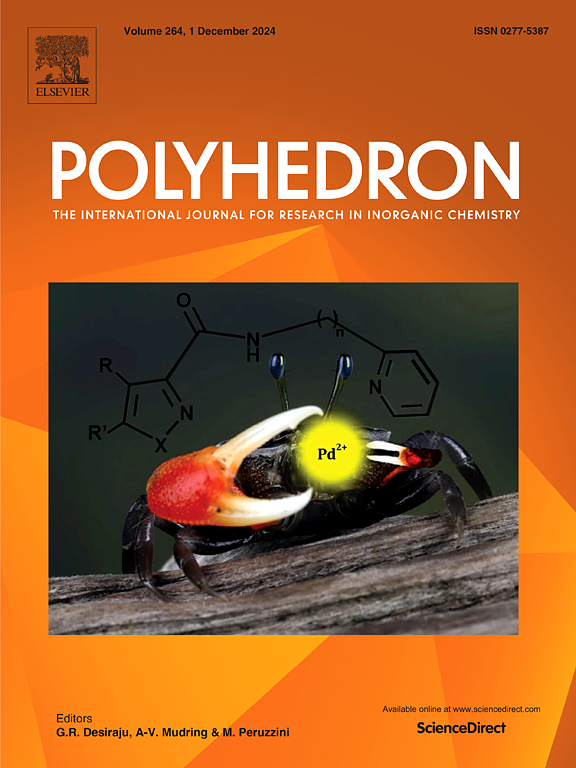Coordination chemistry of alkali metals in a modified β-diketiminate ligand scaffold
IF 2.4
3区 化学
Q2 CHEMISTRY, INORGANIC & NUCLEAR
引用次数: 0
Abstract
β-diketiminate (or NacNac) ligands are a widely used ligand class in the stabilisation of metal complexes across the periodic table, in part due to the ease of variability of the ligand steric and electronic effects either at the β-carbon atom or the N-Ar group. Functionalisation of the γ-carbon position is not typically observed however and examples of such complexes are scarce in the literature. Herein, we report on the synthesis and characterisation of alkali metal NacNac complexes which contain such γ-carbon functionalisation in the form of a methyl group. Deprotonation of the β-diketimine proligand Me3DipNacNacH 1 (Me3DipNacNacH = (CH3)C(C(CH3)NDip)2H, Dip = 2,6-iPr2-C6H3) by various alkali metal bases yielded the corresponding alkali metal complexes Me3DipNacNacAM (where AM = Li 2, Na 3, K 4, Rb 5, Cs 6) which have been fully characterised by 1H and 13C{1H} NMR spectroscopy, while 3 and 4 have been structurally characterised by single-crystal X-ray diffraction. The solid-state structures obtained illustrate the varied range of coordination modes accessible to such group 1 metal complexes.

求助全文
约1分钟内获得全文
求助全文
来源期刊

Polyhedron
化学-晶体学
CiteScore
4.90
自引率
7.70%
发文量
515
审稿时长
2 months
期刊介绍:
Polyhedron publishes original, fundamental, experimental and theoretical work of the highest quality in all the major areas of inorganic chemistry. This includes synthetic chemistry, coordination chemistry, organometallic chemistry, bioinorganic chemistry, and solid-state and materials chemistry.
Papers should be significant pieces of work, and all new compounds must be appropriately characterized. The inclusion of single-crystal X-ray structural data is strongly encouraged, but papers reporting only the X-ray structure determination of a single compound will usually not be considered. Papers on solid-state or materials chemistry will be expected to have a significant molecular chemistry component (such as the synthesis and characterization of the molecular precursors and/or a systematic study of the use of different precursors or reaction conditions) or demonstrate a cutting-edge application (for example inorganic materials for energy applications). Papers dealing only with stability constants are not considered.
 求助内容:
求助内容: 应助结果提醒方式:
应助结果提醒方式:


